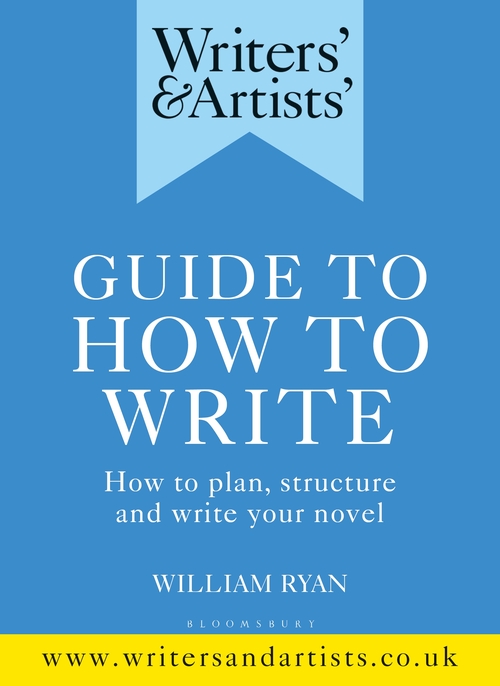In this exclusive extract from the Writers' & Artists' Guide to How to Write, acclaimed author and W&A course leader, William Ryan, focusses on the challenge of creating your dramatic world.

A dramatic world, in storytelling terms, is something that links the important characters and confines the story in some way. It can be something that imposes a physical restriction on the characters and the story – for example, a novel set entirely on a small island with only intermittent contact with the outside world. Alternatively, it could be a shared purpose or connection – a legal drama might have an ongoing litigation as its dramatic world, while a novel set on the American plains in the 1870s might revolve around a cattle drive or a posse hunting down a gang of desperadoes. In each case, the dramatic world provides boundaries to the story. If a character is not present on the island, then they are unlikely to be part of the main story. If a character is not involved in the litigation in some way, either as one of the parties, a witness, a lawyer or someone affected by the outcome, then they will probably have no obvious part in the main storyline of the novel.
However, that doesn’t mean that they won’t be part of a subplot that is important to the novel as a whole and which might have its own dramatic world. For example, a crime novel where a detective is investigating a murder that has taken place in a hospital might have one dramatic world connected to the hospital and medicine, and another within the investigating police team. The hospital dramatic world may have a greater importance to the main storyline, but the police dramatic world might contain an interesting sub-plot. This subplot might revolve around corruption, and its relevance to the main story could be that the internal politics of the police team will make the detective’s job more difficult.
A shared interest in a dramatic world does not mean that the characters have shared motivations; while there is a common connection to the dramatic world, the likelihood is that each of the characters will have different interests in it, and agendas. To refer back to the hospital dramatic world introduced previously, you might have a management team that wants to make changes which may cut costs but will affect the quality of patient care. There may also be a senior doctor who wants to protect his reputation and that of the hospital but is aware of mistakes that have had serious consequences for the health of a patient. Other players within this world may include a medical professional who is ending the lives of terminally ill patients without their consent or a researcher who has taken the credit for the groundbreaking research of a colleague. It is then relatively straightforward to create other characters who have opposing interests, such as the colleague whose research has been stolen and a nurse who has become suspicious of the unusual number of premature fatalities amongst those terminally ill patients. Sometimes these sub-plots will overlap, and the important characters will be in conflict, in different ways, with a number of the other characters. As this exemplar novel concerns a murder, it is likely the victim (always a pivotal character in a crime novel, even if they don’t appear much on the page) will have had a series of conflicts with other characters, each of which could have provided a motive for their murder. [...]
Another factor to consider when looking at a dramatic world is whether they have codes or accepted ways of behaving that the characters, at least on the surface, adhere to. The code of a dramatic world may not always be that of the wider world. The code of a crime family such as The Sopranos in the TV show of the same name may have many ways of behaving that we recognise – such as loyalty, respect and honour – but they have been perverted by the gang’s overriding dedication to crime. In our hospital crime novel, we might expect a general commitment to improving the health of the patients and there will be a series of rules that have been encoded in order to ensure that general commitment is achieved. Other rules may apply, of course, such as supporting your colleagues, not betraying confidences and a prohibition on criminality.
Once you have established the codes and ways of behaving that apply to a dramatic world, think about whether everyone should be complying with them. Are the appearance of the dramatic world and the reality at odds? When our detective starts investigating the murder at the hospital, it may give all the appearance of being a normal, well-functioning healthcare establishment committed to the welfare of its patients with a collegial and efficient team working towards the same aim. Over the course of the novel, though, it will probably become apparent that this is far from the truth. In this situation, the detective will act as a sort of redeemer, fixing the dramatic world as he goes along by exposing the characters who are not playing by the rules, or perhaps by changing their behaviour.
William Ryan is the leader of a number of W&A writing courses. View all upcoming W&A writing courses here
William Ryan has written four historical novels which have been shortlisted for numerous awards, including the Theakstons Crime Novel of the Year, The Kerry Group Irish Fiction Award, the HWA Gold Crown for Historical Fiction, the Crime Writers Association’s Steel, Historical and New Blood Daggers and the Irish Crime Novel of the Year (three times). William teaches creative writing at City University in London and has previously taught at the University of East Anglia. His latest novel, A House of Ghosts, was published in 2019 by Bonnier Zaffre. The Writers' & Artists' Guide to How to Write is published by Bloomsbury and available now.
Comments